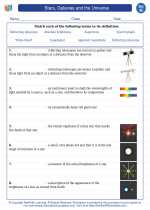Binoculars
Binoculars are optical instruments that consist of two small telescopes mounted side by side and aligned to point in the same direction. They are used to view distant objects with both eyes, providing a three-dimensional image.
How do binoculars work?
Binoculars work by using a series of lenses and prisms to magnify the image of distant objects. The objective lenses at the front of the binoculars gather light and focus it to form an image. This image is then magnified by the eyepiece lenses, which allows the viewer to see the object in greater detail.
Parts of binoculars:
- Objective lenses: These are the lenses at the front of the binoculars that gather light and form the initial image.
- Prisms: Binoculars use prisms to ensure that the image is the right way up and not reversed. The most common type of prism used in binoculars is the Porro prism or the roof prism.
- Eyepiece lenses: These lenses magnify the image formed by the objective lenses, allowing the viewer to see a magnified version of the object.
- Focusing wheel: Binoculars have a focusing wheel that allows the user to adjust the focus of the binoculars to get a sharp image.
- Body and eyecups: The body of the binoculars holds all the components together, and the eyecups provide a comfortable resting place for the viewer's eyes.
Types of binoculars:
There are different types of binoculars designed for specific purposes, such as birdwatching, stargazing, marine use, and general outdoor activities. The choice of binoculars depends on factors such as magnification, field of view, and lens diameter.
How to choose binoculars:
When choosing binoculars, consider the following factors:
- Magnification: The degree to which the object is enlarged. Common magnifications for binoculars are 8x and 10x.
- Objective lens diameter: A larger diameter allows more light to enter the binoculars, providing a brighter image.
- Field of view: This refers to the width of the area visible through the binoculars at a specific distance.
- Prism type: Decide between Porro prisms and roof prisms, which affect the size and shape of the binoculars.
- Waterproofing and durability: Consider the build quality and whether the binoculars are suitable for outdoor use.
Using binoculars:
When using binoculars, hold them steady and use the focusing wheel to adjust the image. Position the eyecups at the correct distance from your eyes and use both eyes to view the object for a more comfortable and immersive experience.
Understanding the basic principles and components of binoculars can enhance your appreciation and enjoyment of the world around you.
.◂Science Worksheets and Study Guides Eighth Grade. Stars, Galaxies and the Universe
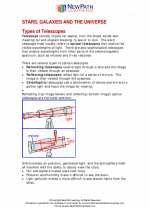
 Worksheet/Answer key
Worksheet/Answer key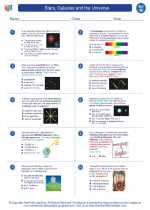
 Worksheet/Answer key
Worksheet/Answer key
 Worksheet/Answer key
Worksheet/Answer key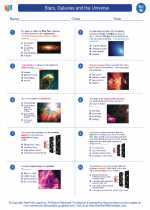
 Vocabulary/Answer key
Vocabulary/Answer key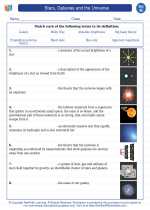
 Vocabulary/Answer key
Vocabulary/Answer key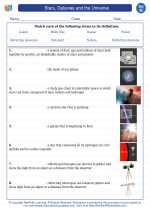
 Vocabulary/Answer key
Vocabulary/Answer key